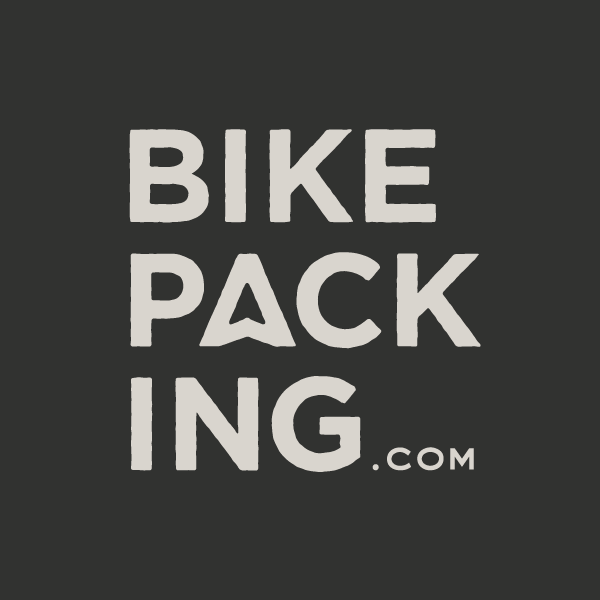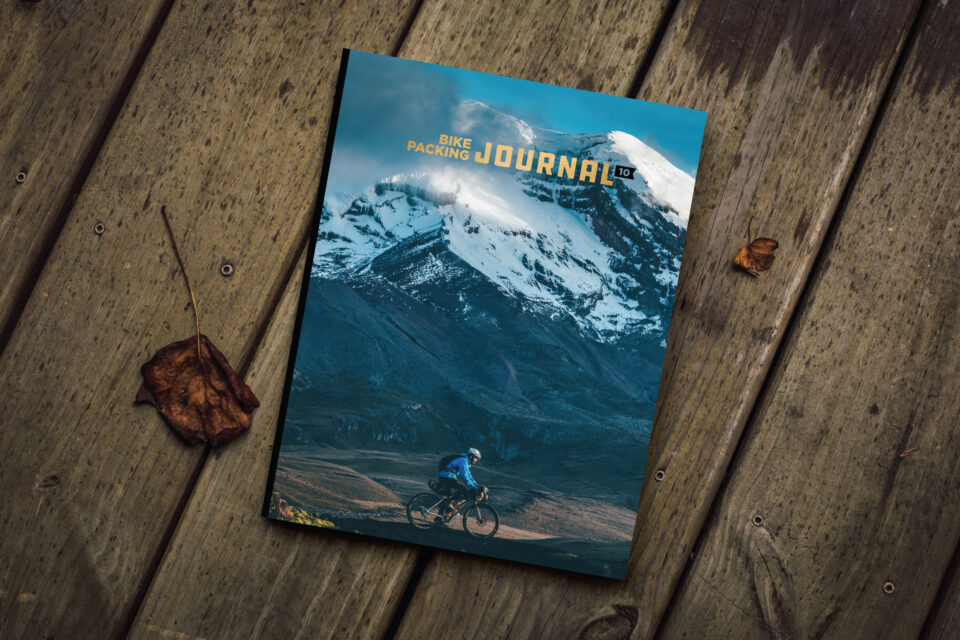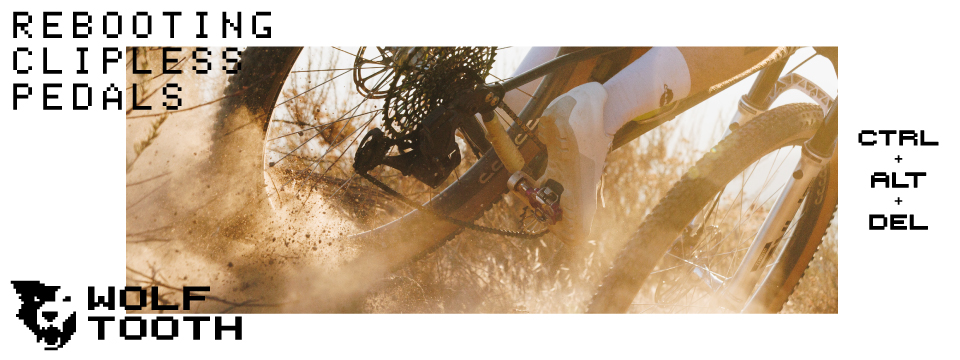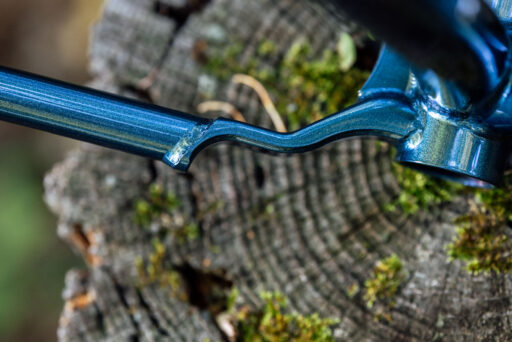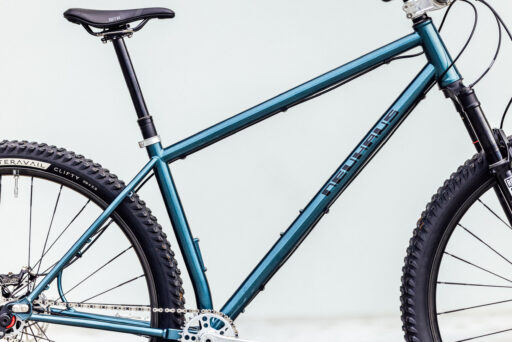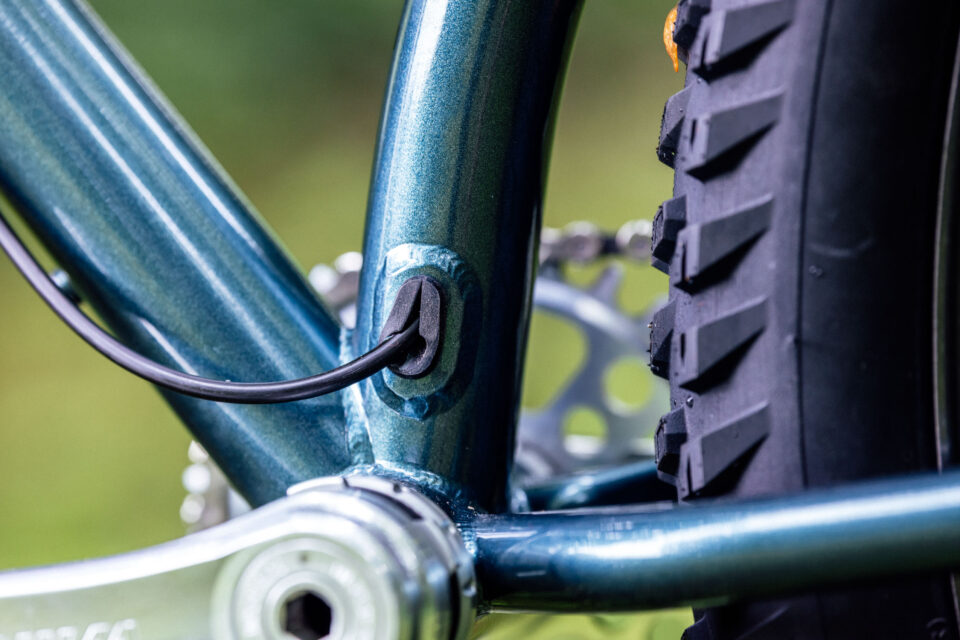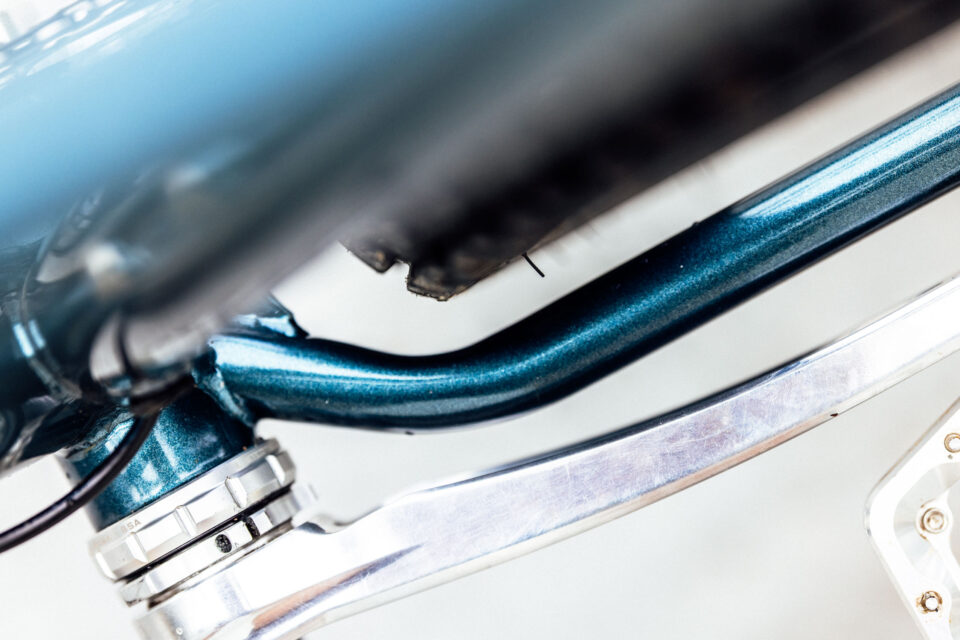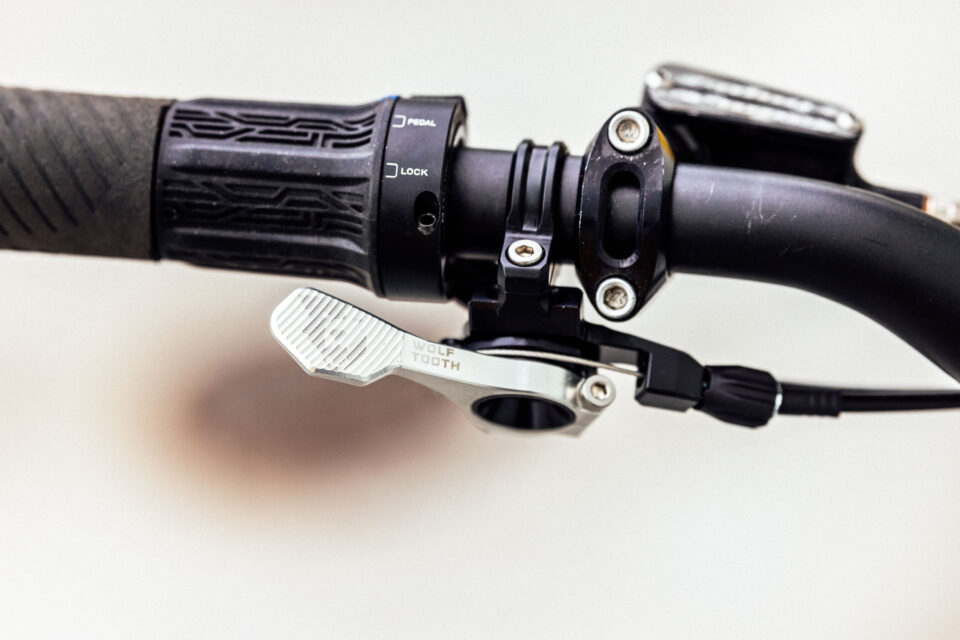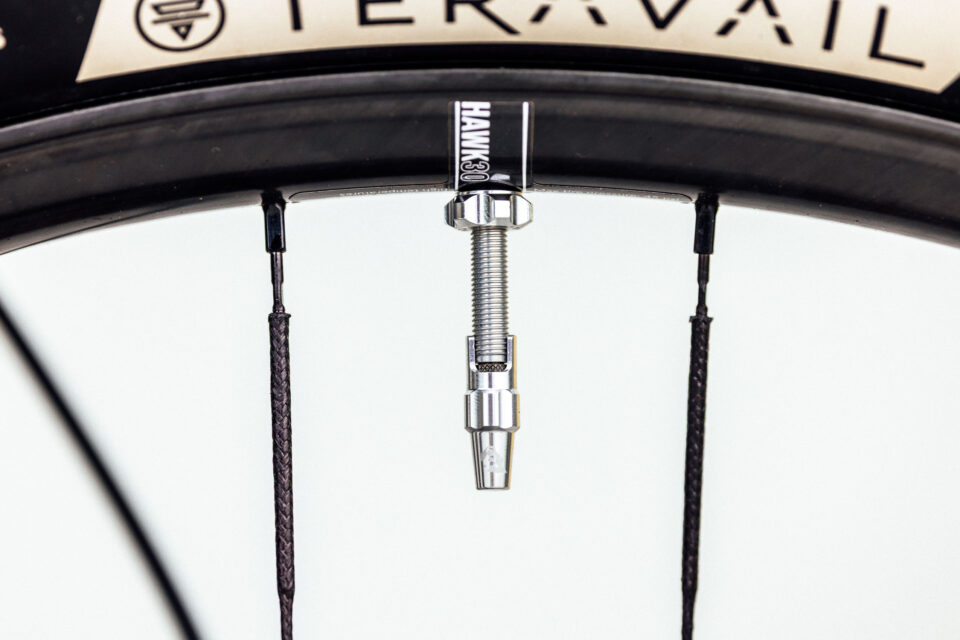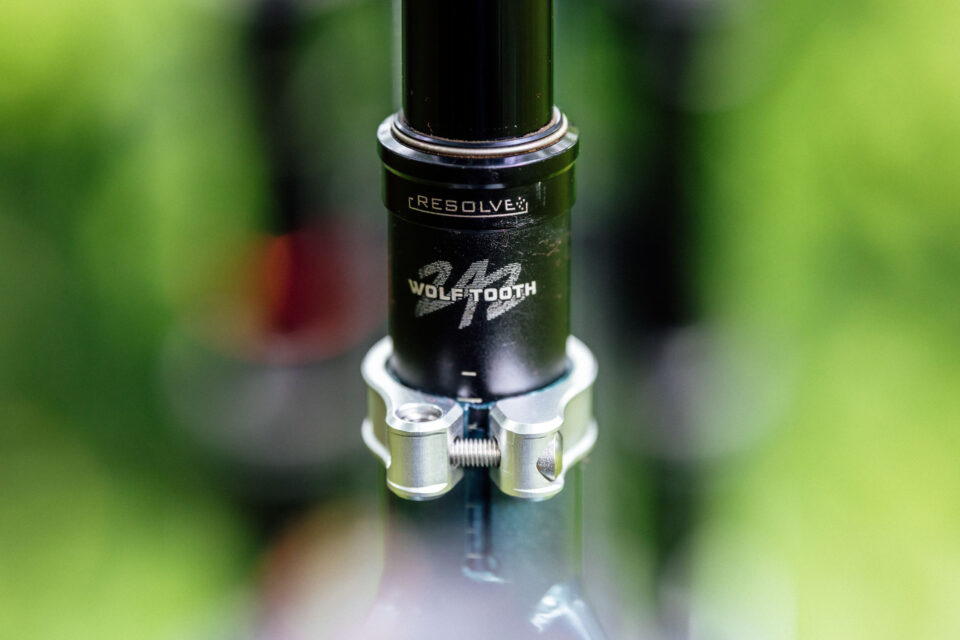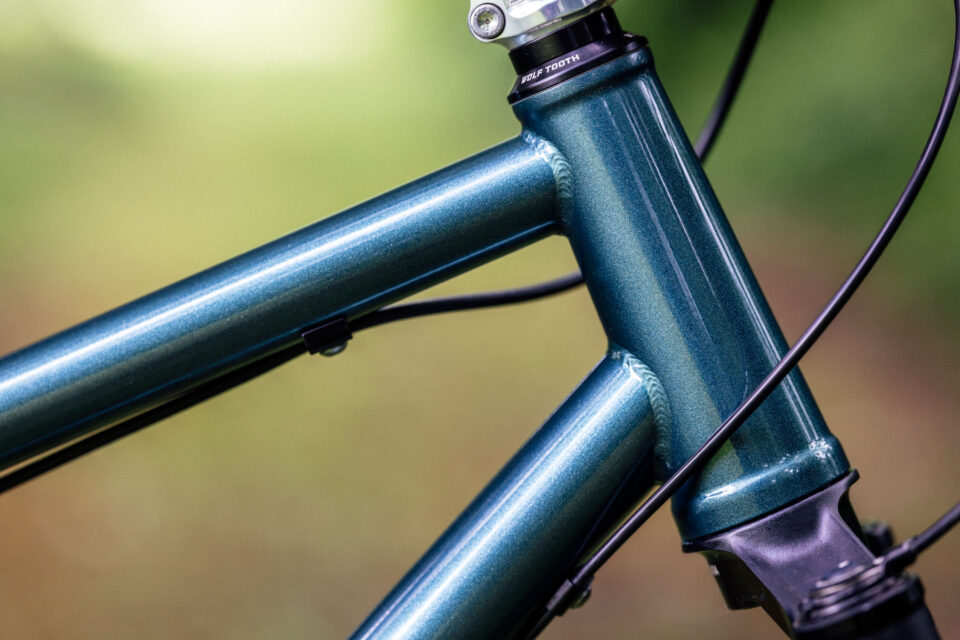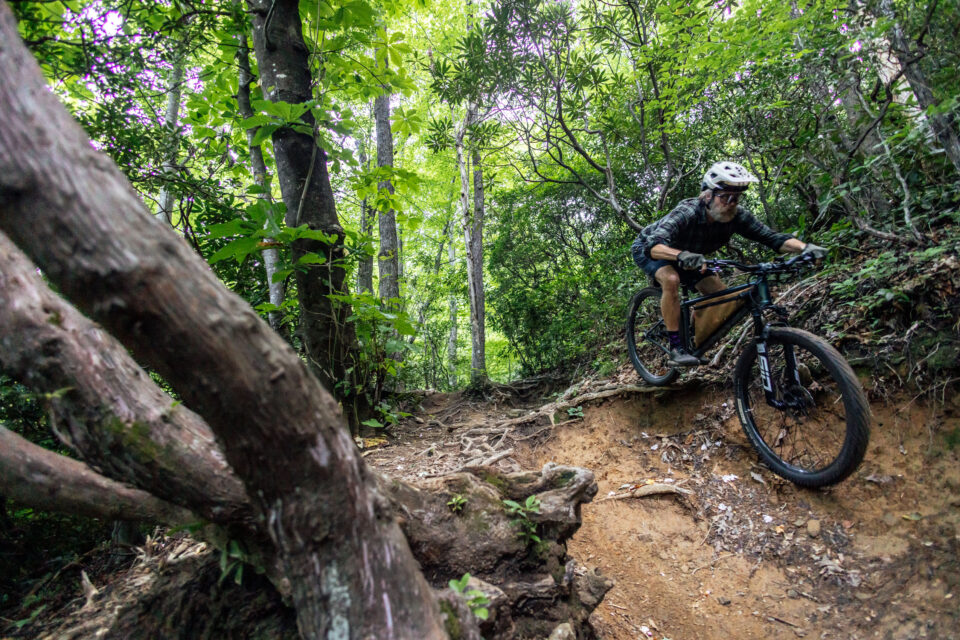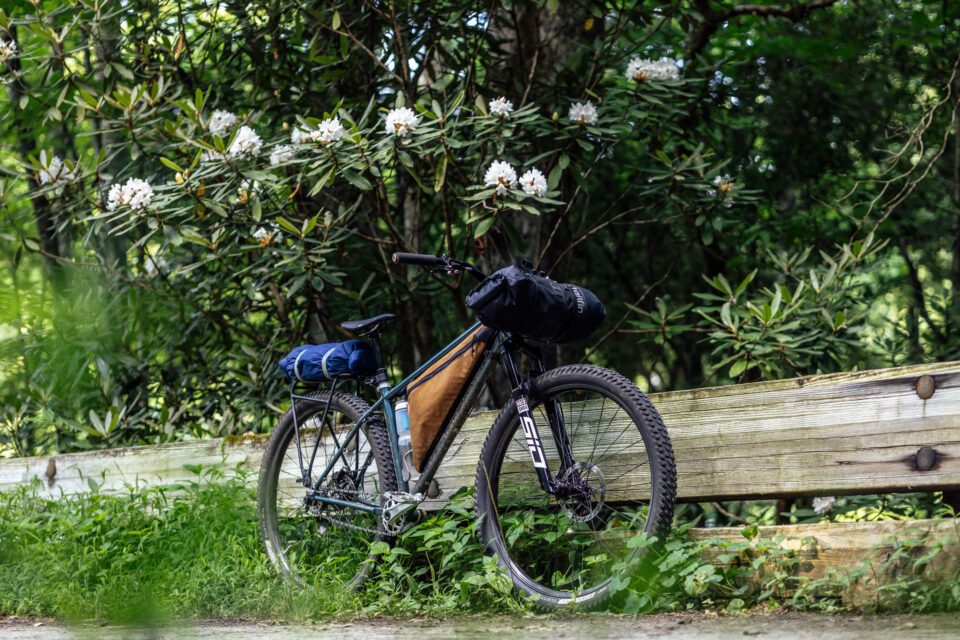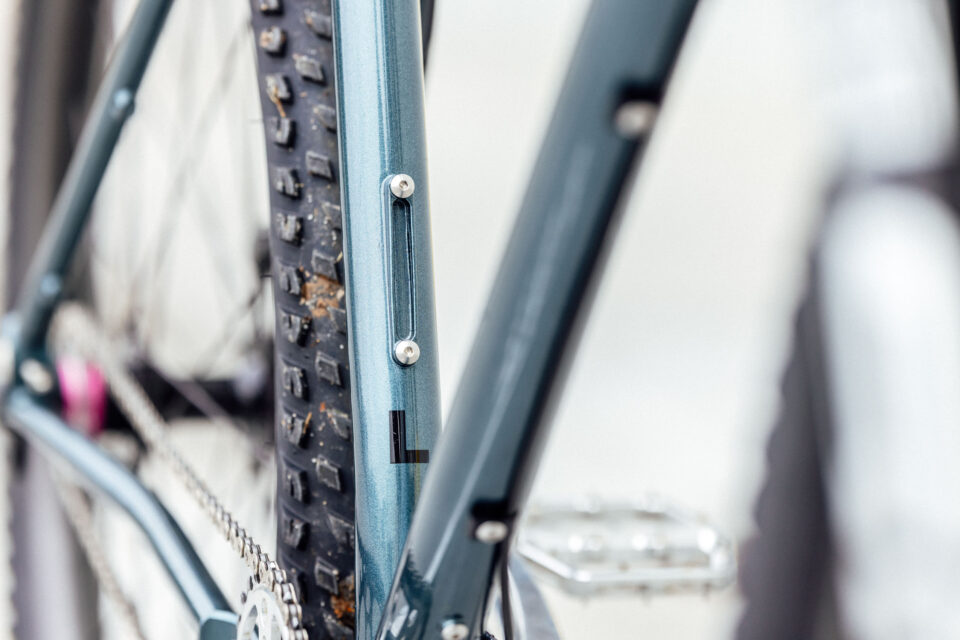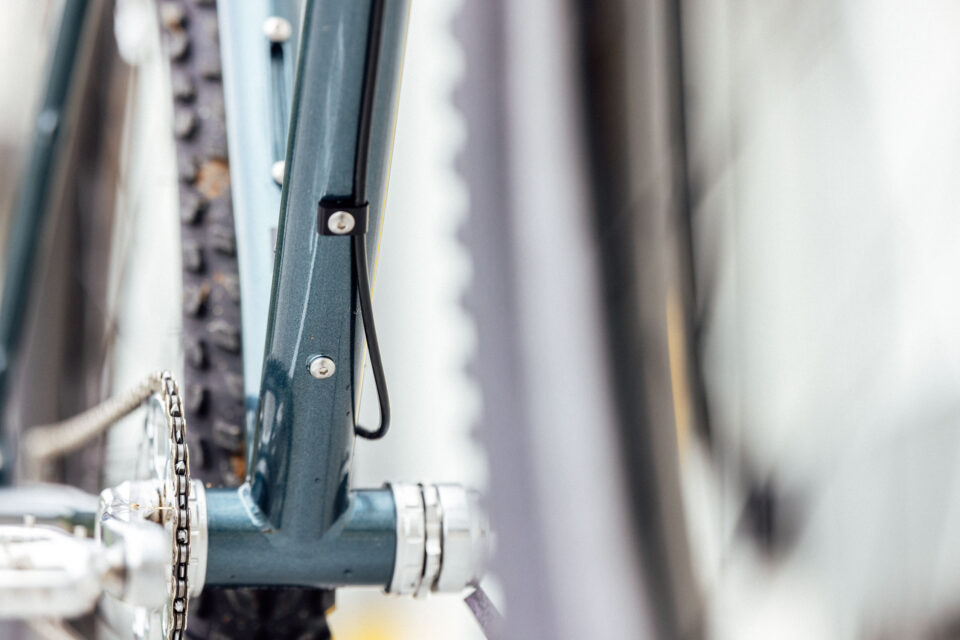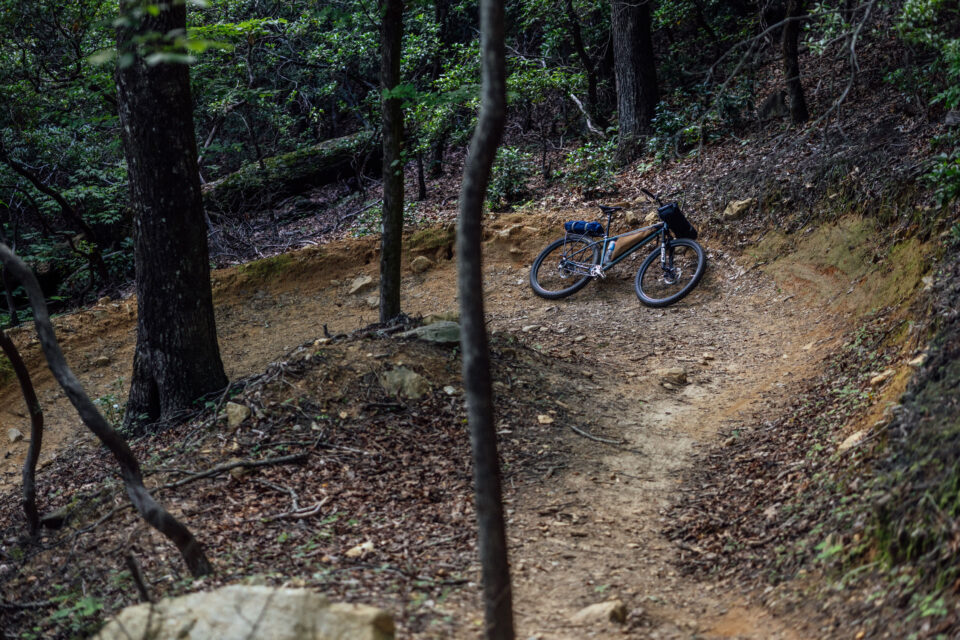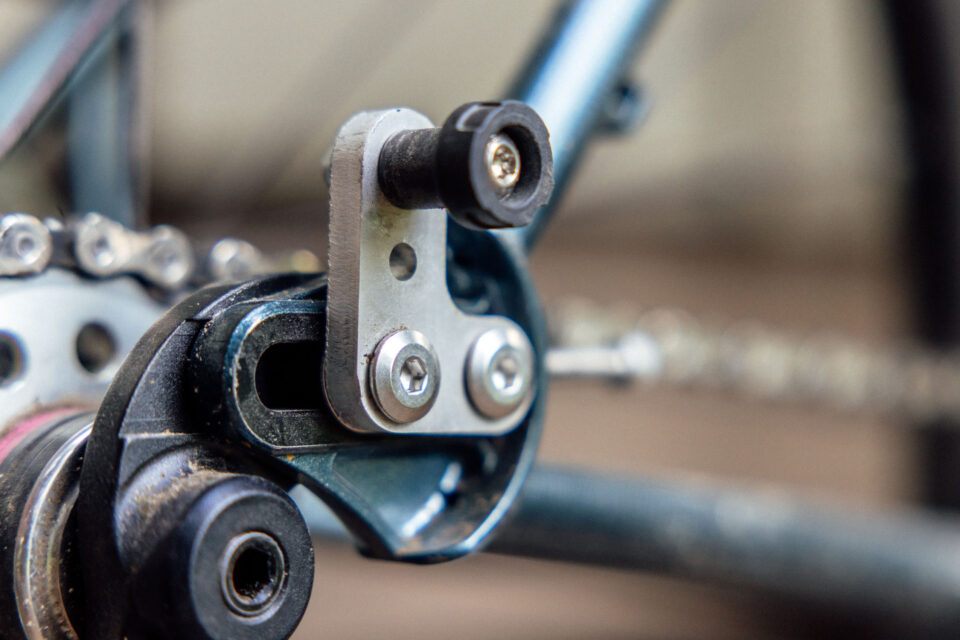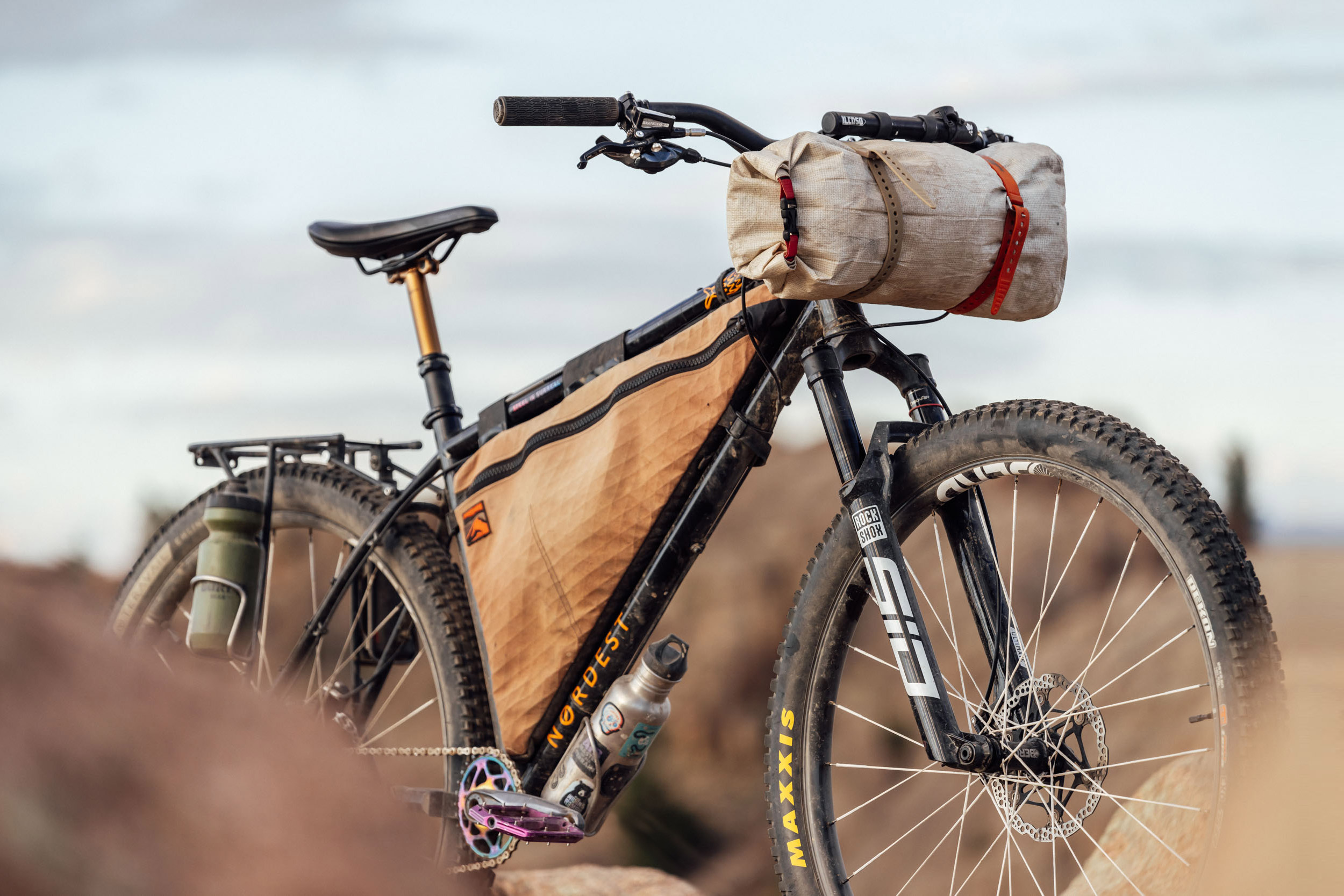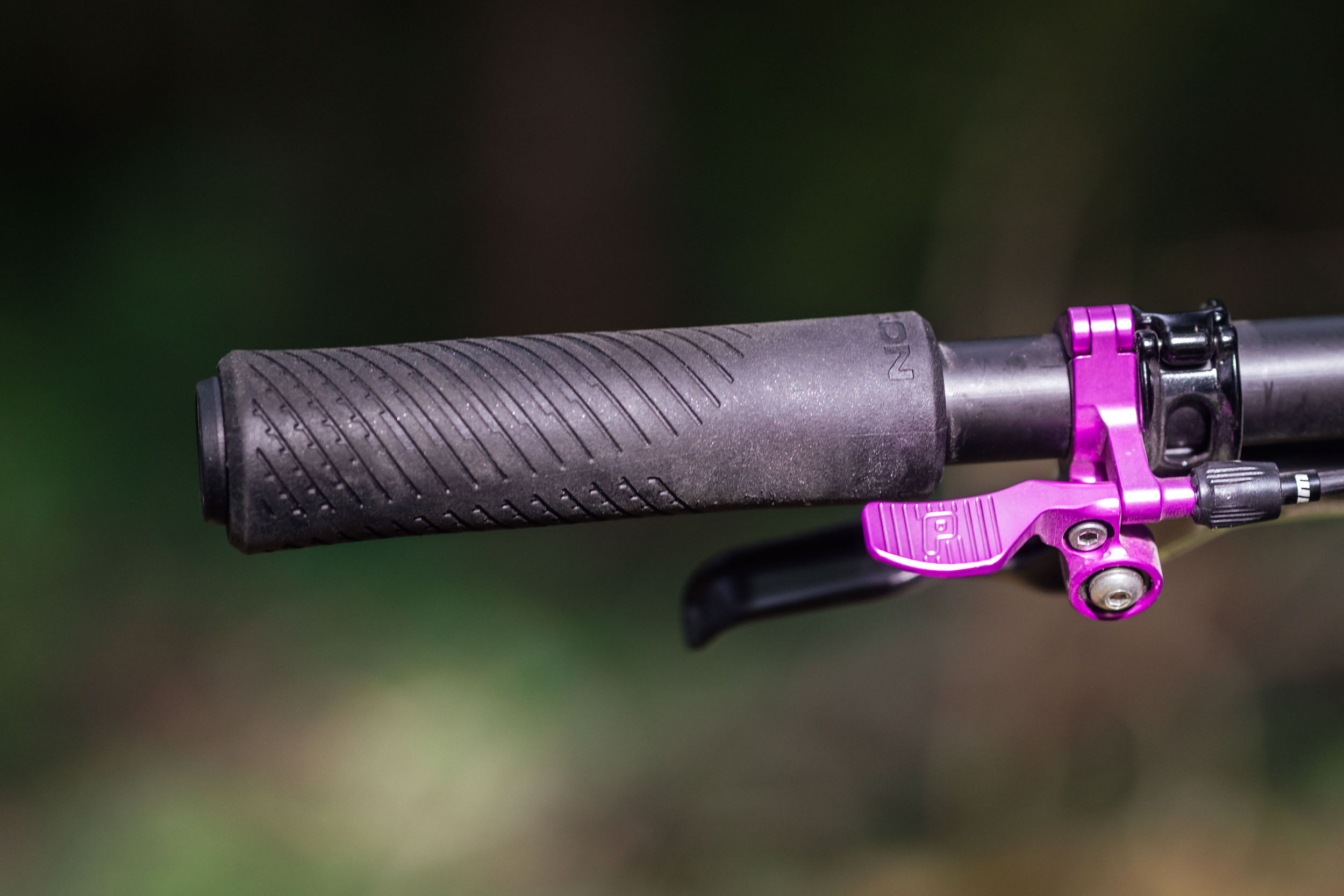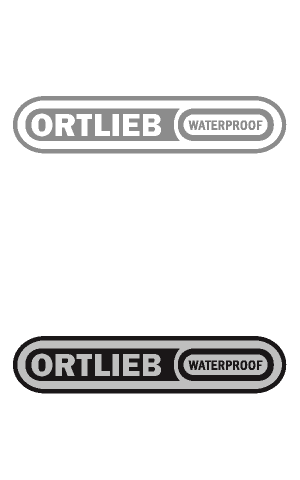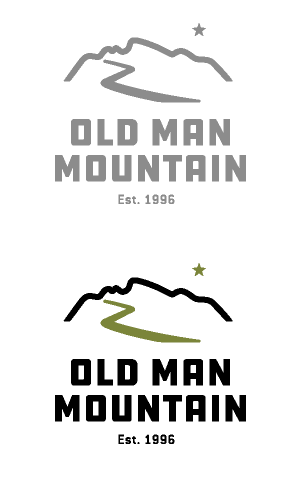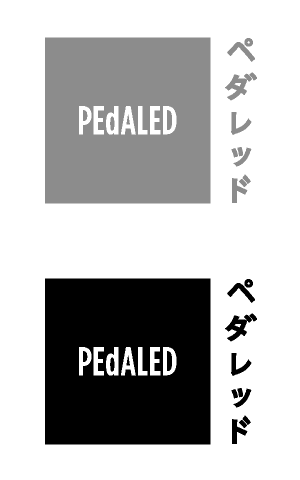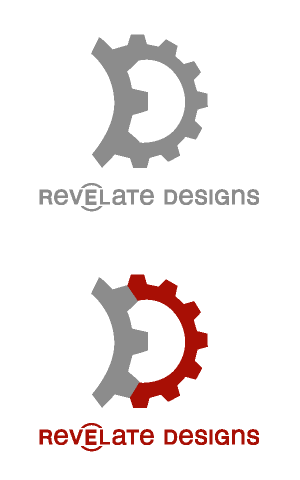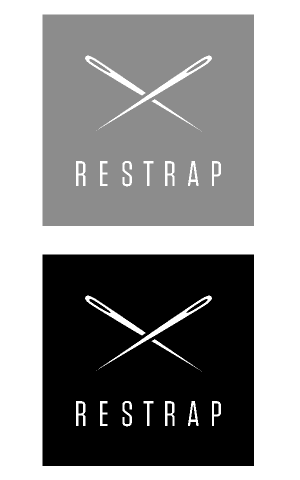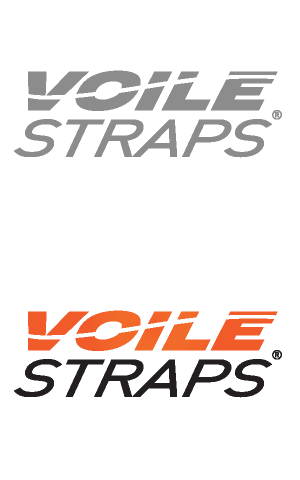Neuhaus Hummingbird Review: A New Normal
The Neuhaus Hummingbird upends the “more progressive or bust” bike bias, serving up a lively, comfortable ride that still delivers when the trail gets spicy. After bikepacking, big day rides, and plenty of laps on Pisgah’s heavy-hitters, it proved playful, confidence-inspiring, and far more versatile than its numbers suggest. Read the review to see why this “new normal” steel hardtail comes highly recommended…
PUBLISHED Sep 16, 2025
With riding photos by TJ Kearns
Some of you might remember a survey we tacked into the Friday Debrief in 2023. We asked you, our readers, to suggest bikes you’d like to see us review, and we got a veritable boatload of responses. Still, there were two or three models that racked up quite a few more mentions than others. One such shining star was the Neuhaus Hummingbird, a lovely hardtail we covered at the MADE show that same year. At the time, the Hummingbird was a semi-custom frame that was only available as a made-to-order option—in steel or titanium—here in the USA.
Frankly, I wasn’t all that interested in it. Instead, I was curious about the brand’s flagship model, the Solstice. It was more progressive than the Hummingbird, and on paper, the Hummingbird seemed a bit ho-hum, for lack of a better descriptor. To be fair, I was fixated on exploring more aggressive geometry at the time, and the Hummingbird’s angles and measurements seemed to fall somewhere in the gray middle of the proverbial hardtail scale of intent, ranked from happy-go-lucky countryside cruiser to flat-out rumbustious downhill crusher. I generally thought it would be an okay bike that didn’t really excel at anything. All I can say is that I love being proven wrong.

But why?
Before I took this bike on, I kept coming back to one question: Why was the Neuhaus Hummingbird one of the most requested review bikes in our survey? I mulled it over for a while. It’s not some radical, mind-bending concept bike; it doesn’t bristle with bikepacking-specific mounts; the geometry is fairly typical for a short-travel hardtail; and the steel frame reads traditional, aside from a few thoughtful details. And yet, the results were in, and there was indisputable interest in the Hummingbird. Clearly, there’s something at work beyond the spec sheet, even though Neuhaus doesn’t carry the cult mystique of a brand like Surly.
One reason might be presentation. Neuhaus Cycles—and in particular, their designer and engineer Daniel Yang—has built a reputation for transparency, clarity, and thoughtful communication. Daniel shares technical insight and design intent in an accessible way, especially through in-depth YouTube videos that dive into geometry, fit, and the details about product design. His videos about bike fit and particular details in the manufacturing process, as well as his talk at the Philly Bike Expo stand out as particularly compelling. It’s this honest, informed storytelling that builds trust, and in a market where consumers increasingly want to understand not just what they’re buying, but who they’re buying from, that goes a long way.
Neuhaus shares some similarities with brands such as Fairlight in how they present their work. Both offer a rare level of insight into the design process, and both manage to strike a balance between technical savvy and approachability. When that’s paired with a reasonably priced production model that’s clearly built with care, it makes sense that folks would take notice—even if the bike itself isn’t flashy on the surface. Ultimately, success for smaller builders often comes down to two things: do people trust you, and does the product measure up? Neuhaus seems to have checked both boxes.
Beyond reader requests, there were a few reasons I decided to give the Hummingbird a shot. One was the fact that Neuhaus nixed the Solstice model from their Core lineup, which clarified the horse they were first betting on. To provide a little context and refresh everyone’s memory, owner, proprietor, and framebuilder Nick Neuhaus started Neuhaus Metalworks in 2021 with the help of design engineer and 3D-printing specialist Daniel Yang. Prior to that, Nick’s first bike was the Solstice Mullet, a raucous hardtail that was perfect for the type of riding Nick was doing at the time. He mentioned that it was very good for its intended use, but he and Daniel quickly realized the need to center the brand around a more “civilized” hardtail trail bike. Since then, they developed two versions of the Hummingbird and a couple of gravel bikes.

Up until earlier this year, every Neuhaus bike was handmade in the United States, offering the full suite of custom-bike benefits—plus the hefty cost. This past February, they officially released the Neuhaus Hummingbird Core, the one I’m reviewing here. This marked the brand’s move to Taiwan-built models and enabled them to bring some of their refined design concepts to folks at a fraction of the cost.
Neuhaus Hummingbird vs. Hummingbird Core
The Hummingbird Core didn’t really change all that much, and there weren’t any significant geometry changes that convinced me to try it. Just like its semi-custom steel sibling, the Hummingbird Core is built from quad-butted, heat-treated Chromoly steel tubing with size-specific tubesets to ensure consistent ride quality across the range. It’s designed around a 120mm travel fork and 29” wheels with clearance for 2.1 to 2.6” tires. It has the modern standards you might expect, including Boost hub spacing, a tapered headtube, and a 31.6mm seatpost.
The Core’s frame switched from a T47 to a 73mm threaded BSA bottom bracket. Daniel mentioned that they use T47 on custom frames to run the dropper cable internally—mostly for aesthetics—but the Core lineup prioritizes ease-of-maintenance, so the dropper cable is externally routed along the downtube. Additionally, there are no 3D-printed parts on the Core frames, unlike the custom versions that have a 3D-printed seat tube junction, dropouts, yoke, and bottle cage mount. The parts on the Core are all cast. “That is the exciting thing about taking production to Taiwan,” Daniel added. “We develop and optimize designs with 3D printing, then we bring the cost down through casting and scale.”
The Hummingbird Core also retained the brand’s prized 52mm chainline, something Daniel and Nick were hellbent on accomplishing in an effort to keep the Q-factor as narrow as possible. As Daniel explained, “These days, 55mm chainlines and wider Q-factors are haphazardly applied to all mountain bikes, even though it exists simply for full suspensions and e-bikes. You can always put a 55mm crank on a 52mm frame, but not the other way around!”
| Size | S | M | ML | L | XL |
|---|---|---|---|---|---|
| Saddle Height | 660-700 | 690-730 | 720-760 | 750-790 | 780-820 |
| Stack | 606 | 615 | 634 | 652 | 661 |
| Reach | 415 | 435 | 455 | 470 | 485 |
| Effective TT | 589 | 611 | 631 | 651 | 668 |
| Seat Tube Length | 370 | 390 | 420 | 440 | 460 |
| Seat Tube Angle | 74.5 | 74.5 | 74.5 | 74.5 | 74.5 |
| Head Tube Angle | 66 | 66 | 66 | 66 | 66 |
| Wheel Base (min) | 1124 | 1149 | 1177 | 1200 | 1219 |
| Chainstay | 420-435 | 420-435 | 420-435 | 420-435 | 420-435 |
| BB Drop | 56 | 56 | 56 | 56 | 56 |
| Min Steerer | 150 | 160 | 180 | 200 | 210 |
| Travel | 120 | 120 | 120 | 120 | 120 |
| Rider Height | 5’4″-5’7″ | 5’7″-5’9″ | 5’9″-5’11” | 5’11”-6’1″ | 6’1″-6’3″ |
Neuhaus Hummingbird Core geometry as shown is unsagged.
One major difference between the Hummingbird custom and Hummingbird core is the sizing. The Core, for obvious reasons, isn’t offered in the full custom spectrum of 16 sizes. Instead, Neuhaus whittled it down to five, ranging from small to XL with a medium-large (ML) version nestled in the middle, marking an in-betweener size on the portion of the sizing scale most common for fit quandaries. This S-XL range fits riders from 5’4” to 6’3” tall, according to their geometry/sizing chart.
Fit and Build
I’m 6 feet tall (1.83 meters), and have a 75” wingspan (1.91 meters), or +3” ape index, and a 34.5” Inseam (0.88 meters). The size large fit me pretty well. I started with a longer 60mm stem to stretch it out closer to the Cotic BFe I was also riding at the time, but I found myself putting a little too much pressure on my hands. I ended up swapping that for a 35mm stem, which tightened up the fit and gave the Hummingbird a little more of a comfy, upright stance. After settling in with a slightly backswept 800mm Stooge Moto Bars, I found that it fit like a glove. Here’s my build kit for reference; I ended up swapping a few things here and there during my four months with it.

- Frame: Neuhaus Hummingbird Core, Size L
- Fork: Rockshox SID Ultimate, 120mm
- Front Hub: Berd Hawk 30
- Rear Hub: Berd Hawk 30
- Rims: Berd Hawk 30, 30mm IW
- Spokes: Berd
- Front Tire: Teravail Clifty 29 x 2.5, Durable
- Rear Tire: Teravail Clifty 29 x 2.5, Durable
- Crankset: Cane Creek eeWings, 170mm
- Chainring: Wolf Tooth, 30T
- Rear Cog: Wolf Tooth Stainless, 20T
- Bottom Bracket: Cane Creek
- Handlebar: Stooge Moto Bar, 800mm
- Stem: Profile Racing Helm 35mm
- Grips: Ergon GXR
- Headset: Wolf Tooth
- Brakes: Hope Tech4 E4
- Saddle: WTB Solano SL
- Seatpost: Wolf Tooth Resolve, 242mm
Perhaps this is a good place to call out a couple of frame features that add real versatility to how you can build this bike. First is the cast-steel bottle bracket welded to the seat tube. This thoughtful detail keeps bolts from protruding into the tube, letting you use its full length and maximizing dropper-post insertion. Many bikes in this category nix seat-tube bottle bosses for that very reason; this is a much better solution. With the Hummingbird, I was able to do something I’ve never pulled off before: run a 242 mm dropper post and my favorite frame-bag setup—a wedge.

Second is the fact that the Hummingbird comes equipped with 15mm Paragon-esque sliding dropouts. Not only can it be easily set up as a singlespeed, but this also allows the chainstay length to be adjusted from 420 to 435mm. I wish all steel bikes came with a slider.
Tubeset and Ride Feel
That brings us back to the premise of this review. At Sea Otter a couple of years ago, I asked Nick to describe the motivation behind the brand and the Hummingbird, which had clearly stepped in as the Neuhaus Metalworks linchpin. He explained that they were focused on designing and building bikes that were truly inclusive. Matching frame fit and feel with riders of all shapes and sizes was a large part of their mission, and all of their bikes use size-specific tubing to help provide a consistent experience across the size spectrum.

The Hummingbird Core has a very similar tubing spec to the O.G. custom Hummingbird. Its custom heat-treated 4130 chromoly is made by their production partner in Taiwan, but according to Daniel, the magic lies in its quad butting. There is an extra-thick butt (wall thickness) at the headtube designed for durability, which allows it to be built without an external gusset plate, something I’m always happy to see. Daniel also explained that the lengths of the thin sections of tubing are maximized to fine-tune flex, and these lengths change for each size frame. Small and medium sizes also step down in downtube, toptube, and seat stay diameters, which makes them proportionally less stiff, theoretically maintaining the same ride qualities through the entire size spectrum.
From the first ride on the large Hummingbird, it was clear that I had a light and very well-conceived tubeset on my hands. I can confidently claim this is in the top three best-feeling steel hardtail frames I’ve ridden. And while different people might have varying interpretations of what “best-feeling” might mean, to me that qualifier represents balance—having a lively and responsive demeanor while retaining a comfortable and forgiving quality. The Hummingbird is a shining example of this perfect blend. It feels springy, quick, and very fast. It’s also incredibly comfortable and plush where it counts. I should note that the frame just so happens to register the exact same weight as another frame I’d put in my top three for ride quality, the Cotic SolarisMax.
Ride Impressions: A Trail Bike For the People
On a different level, making bikes inclusive also means making bikes that are approachable. There are simply more people who just casually ride mountain bikes than there are folks who push it to the limits. For a significant majority of mountain bikers, both novices and experienced riders, approachable hardtails better suit the kind of riding they actually enjoy. Progressive geometry is great for aggressive, high-speed descents on technical terrain, but not everyone is chasing that experience. A more normal hardtail can feel less intimidating and more aligned with those types of riders’ goals. Plus, they are more apt to feel comfortable and efficient for mellow cruising, all-day rides, or mountain touring, where a familiar ride quality matters more than testing mettle on steep, breakneck trails. Bikes like the Neuhaus Hummingbird are more for the people.
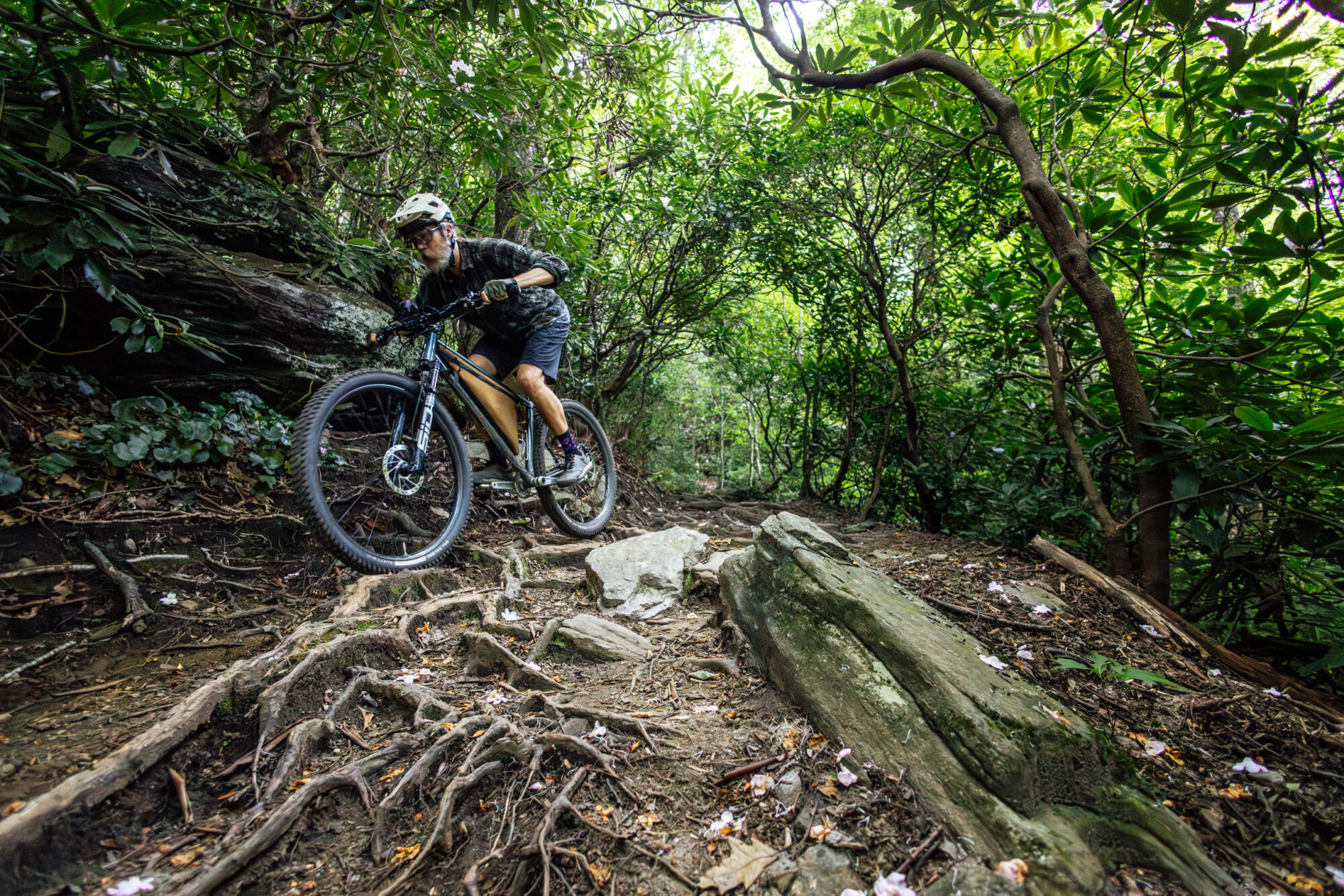
All that being said, I quickly learned that the Hummingbird can’t exactly be pegged as normal. It might be a stretch to call it atypical, but I think it’s a special bike. I came to think of it as a new normal. I rode it on all manner of rides around western North Carolina—everything from long mixed-terrain loops to winch-and-plummet trail rides on all of Pisgah’s heavy-hitters: Farlow Gap, Pilot Rock, Bennett, Black Mountain, the rocky side of Daniel’s, etc. I wasn’t surprised that the Hummingbird is a great all-day-friendly bike that can be comfortably pedaled for those big nine-to-five rides, but what consistently surprised me was how well it handled more aggressive terrain. Judging purely by its relatively steep head tube (or non-overly-progressive, rather) and short chainstays, I expected it to feel a little skittish when pushed down spicier lines, but that wasn’t the case at all. In fact, it seemed to have almost as much confidence-inspiring grit as the Cotic BFe I’d been riding. Not quite, but close. Either way, to say I was pleasantly surprised is an understatement. I’ve been wanting a dedicated trail-oriented singlespeed for my quiver—something I can happily take out with friends to ride any of our tough trails—and I believe I’ve found it.

One thing that separates the Hummingbird from many of the trail hardtails I’ve ridden lately is its relatively short chainstay length. It’s been a while since I’ve ridden a trail mountain bike with ~420mm stays. Needless to say, it’s quick, nimble, and very playful. During the test period, as I was regularly picking my way through singletrack, I often conjured a modified version of Muhammad Ali’s famous quote, “Float like a hummingbird, sting like a bee.” I’m still scratching my head as to how the Neuhaus Hummingbird manifests the sting portion of that, maintaining such a high level of poise, stability, and confidence, but I’ll chalk it up to a decently long front-center and a little bit of magic.

Bikepacking
It’s rare to write a bike review where I struggle to find any real cons with how it rides, but here we are, some 2,500 words in. I’d consider the Hummingbird spotless up to this point in my report, and the only genuine downsides I could muster were in the bikepacking department. The most obvious is that it doesn’t really have any extra mounts. This will likely annoy some people, but I’d argue that two pairs of bottle mounts in the triangle and one under matches the intent of this bike. Maybe rack mounts would be a welcome addition, but now that there’s a slew of axle-mount options, I don’t think it warrants as hefty a penalty as it did a couple of years ago. Note that I used a pair of prototype slider mounts that Daniel sent. They definitely need some work, but I think it’s a good direction.

Let me reframe the idea of “intent” by spelling out what the Neuhaus Hummingbird isn’t: it’s not a touring bike. If you’re looking for a trail bike that will double as a world-tourer, this isn’t your huckleberry. In other words, it’s not a bike you’d want to strap heavily laden panniers and an overstuffed Carradice-style bag onto, but I’d consider it perfectly fit for typical bikepacking, particularly for folks who have a lightweight packing sensibility. I loaded the Hummingbird up on a few occasions, mostly overnighters, and it was plenty adequate. Paying close attention to the frame, it was pretty clear that it would get a little wiggly with heavier loads. But then again, if they built it to handle a lot of weight, we’d lose that sweet, sweet ride quality.
- Model/Size Tested: Neuhaus Hummingbird Core
- Actual Weight: 2.82 kg (6.22 pounds)
- Place of Manufacture: Taiwan
- Price: $1,399
- Manufacturer’s Details: Neuhaus Metalworks
Pros
- Absolutely wonderful steel ride quality
- A true jack of all trades geometry that blurs boundaries
- Lightweight frame with aesthetically pleasing tubing configuration and no external gussets
- Sliding dropouts
- Surprisingly confident descender; punches way above its weight
- Playful and nimble, to boot
- Fits a long 240mm dropper post with the bottle bracket
Cons
- A couple more mounts might be nice
- Not ideal for heavier-loaded bikepacking
- A little pricey compared to some other steel hardtail frames
Wrap Up
If you think about it, a hardtail is inherently not “progressive.” No matter how slack and over-forked you make them, they’re not built for World Cup-level downhill. That’s where big full-suspension bikes sit on the intended-use spectrum. In many ways, hardtails better match how most people actually ride—their skills, comfort, and preferred trails. With that in mind, a hardtail is almost the quintessential mountain bike: a bike for the masses. The Neuhaus Hummingbird is a particularly focused expression of that idea—a purpose-built, distilled take on the hardtail. It even makes you wonder why super-aggressive hardtails exist in the first place. I’ve explored that genre’s deeper corners, so I get the appeal, but the Hummingbird seems to occupy the sweet spot of what a hardtail should be.
That said, it also blurs boundaries better than many bikes I’ve ridden. The name fits from two angles: “Hummingbird” suggests light, quick, and fast—and the bike delivers. It also nods to Marin’s Hummingbird trail, which by all accounts is rough, sketchy, and demanding—and it handles that, too. It was a bit of an anomaly that surprised me on every outing.
In short, the Neuhaus Hummingbird is a joy on nearly any ride, and when things get dicey, it doesn’t leave you hanging. If you’re new to mountain biking or just looking for a good do-all solution, it would be among my top recommendations. It’s not cheap, but it’s a great bike that fits comfortably across many riding styles, and it’ll likely be just as good five or ten years from now.
Further Reading
Make sure to dig into these related articles for more info...
Please keep the conversation civil, constructive, and inclusive, or your comment will be removed.
